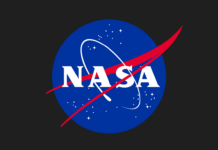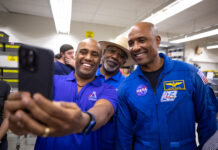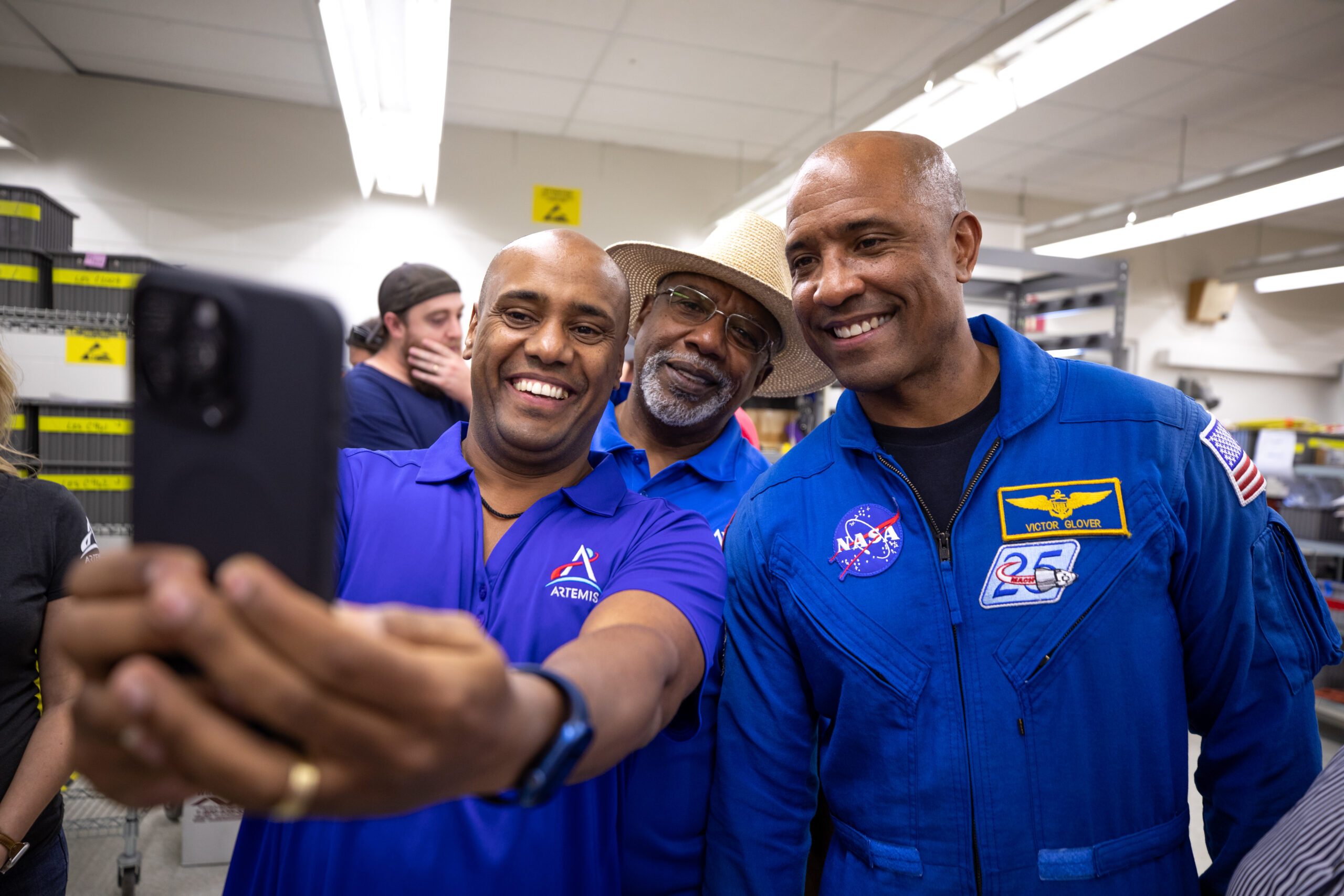NASA’s Kennedy Space Center: A Closer Look at the Role of Exploration Ground Systems in Artemis Missions
In a delightful moment captured on November 8, 2024, employees at NASA’s Kennedy Space Center in Florida, alongside NASA astronaut Victor Glover, took a memorable photo during Glover’s visit. These employees are integral to NASA’s Exploration Ground Systems (EGS), a key component of NASA’s efforts to develop and operate the necessary systems and facilities to process and launch rockets and spacecraft, especially focusing on the Artemis missions.
Understanding the Role of Exploration Ground Systems
The EGS team is pivotal in ensuring the success of NASA’s Artemis missions, which aim to return humans to the Moon and eventually extend human exploration to Mars. The systems developed by EGS are essential for the assembly, launch, and recovery of rockets and spacecraft. This includes the meticulous preparation and processing of spacecraft before they are launched into space, as well as the recovery operations once these missions return to Earth.
The Artemis Missions: A New Era of Space Exploration
The Artemis missions represent a significant leap forward in space exploration, with an ambitious goal of landing "the first woman and the next man" on the Moon. These missions are designed to demonstrate new technologies, capabilities, and business approaches needed for future exploration, including Mars.
The EGS team’s role is to ensure that all ground systems are ready and functioning optimally for these missions. This includes managing the Vehicle Assembly Building (VAB), Launch Control Center, and other critical infrastructure at Kennedy Space Center. These facilities are where rockets are assembled, tested, and launched.
Key Responsibilities of EGS
- Rocket Assembly and Processing: The EGS team is responsible for the assembly of rockets, which involves a complex sequence of events to prepare the rocket for launch. This process includes stacking the rocket stages, integrating the spacecraft, and conducting a series of tests to ensure everything is in working order.
- Launch Operations: On launch day, the EGS team coordinates the countdown and launch operations. This includes monitoring the systems, ensuring that all procedures are followed, and addressing any issues that may arise.
- Recovery Operations: After a mission has been completed, the EGS team is responsible for the recovery of spacecraft and any returning astronauts. This includes coordinating with other teams to ensure a safe and efficient recovery process.
Technical Jargon Simplified
- Vehicle Assembly Building (VAB): A large building where rockets and spacecraft are assembled before being moved to the launch pad.
- Launch Control Center: The central hub for managing and monitoring launch operations, ensuring everything is on track for a successful mission.
The Importance of EGS to NASA’s Future
The work carried out by the EGS team is crucial to the success of NASA’s exploration efforts. Without the safe and efficient processing and launching of spacecraft, missions like Artemis would not be feasible. The systems and processes developed by EGS ensure that NASA can meet its ambitious goals for space exploration.
Good to Know: The Broader Impact of Artemis
The Artemis program is not just about returning to the Moon. It serves as a testing ground for technologies and strategies that will be essential for future missions to Mars. The knowledge gained from these missions will help bridge the gap between lunar and Martian exploration.
Reactions and Reviews
The efforts of the EGS team have been met with enthusiasm and support from the scientific community and the public. The Artemis missions represent a new era of space exploration, and the work of the EGS team is a testament to NASA’s commitment to pushing the boundaries of what is possible in space exploration.
The partnership between NASA and commercial partners is also noteworthy. These collaborations are crucial for the development of innovative solutions and cost-effective strategies for space exploration.
Conclusion
The Exploration Ground Systems at NASA’s Kennedy Space Center are indispensable to the success of the Artemis missions. The dedicated team of employees ensures that every aspect of the mission, from assembly to recovery, is handled with precision and expertise. As NASA continues to push the boundaries of human exploration, the EGS team will remain a cornerstone of these groundbreaking efforts.
For more information on the role of Exploration Ground Systems in NASA’s missions, you can visit NASA’s official website.
For more Information, Refer to this article.


































